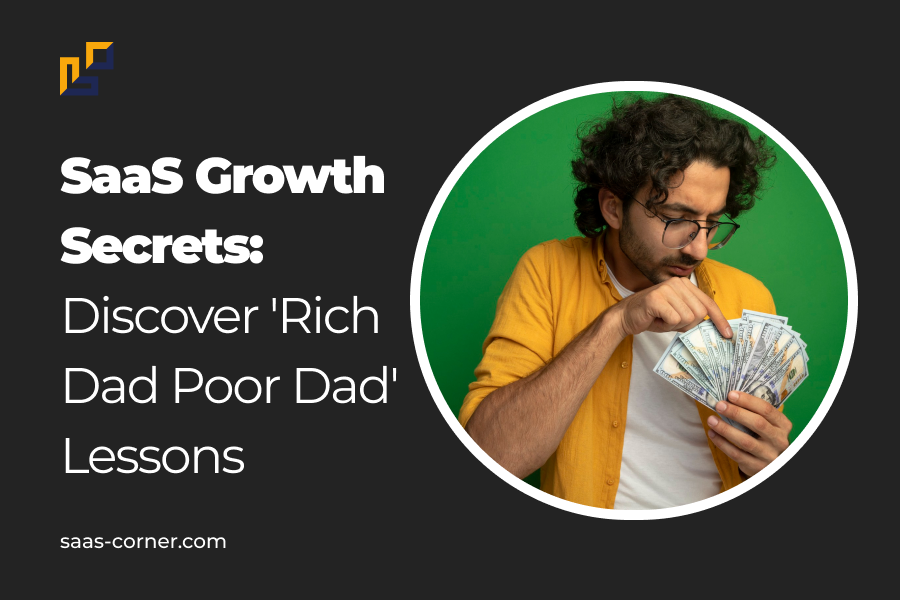As a SaaS (Software as a Service) founder, I have come across numerous resources and books that have shaped my mindset and approach to entrepreneurship. One book that stands out is “Rich Dad, Poor Dad” by Robert Kiyosaki. In this article, I will share seven key lessons I have learned from this influential book and explain how they can be applied to the world of SaaS businesses.
Table of Contents
- Lesson 1: The Importance of Financial Education
- Lesson 2: Understanding Assets and Liabilities
- Lesson 3: Building Passive Income Streams
- Lesson 4: The Power of Leverage
- Lesson 5: Developing a Mindset for Success
- Lesson 6: Taking Calculated Risks
- Lesson 7: The Value of Entrepreneurship and Financial Independence
- Conclusion
- FAQs (Frequently Asked Questions)
Lesson 1: The Importance of Financial Education
In “Rich Dad Poor Dad,” the author emphasizes the significance of financial education. As a SaaS founder, it is crucial to understand the intricacies of finances, including cash flow, investments, and financial management. By continuously expanding our financial knowledge, we can make informed decisions and navigate the complex financial landscape of running a SaaS business.
Lesson 2: Understanding Assets and Liabilities
The book introduces the concept of assets and liabilities. An asset is anything that puts money in your pocket, while a liability takes money out of your pocket. Applying this concept to SaaS businesses, it becomes essential to differentiate between assets, such as recurring revenue streams and intellectual property, and liabilities, such as high fixed costs or unnecessary expenses. This understanding helps SaaS founders focus on building and acquiring assets that contribute to long-term success.
Lesson 3: Building Passive Income Streams
“Rich Dad Poor Dad” stresses the importance of building passive income streams to achieve financial independence. By focusing on building a scalable and sustainable SaaS business model, founders can create passive income streams that allow them to thrive even when they’re not actively working on the business. For SaaS founders, this translates into developing products or services that generate recurring revenue.
Lesson 4: The Power of Leverage
Leverage plays a significant role in the success of SaaS founders. In the book, leverage uses other people’s time, money, and resources to create wealth. SaaS founders can leverage technology, strategic partnerships, and outsourcing to scale their businesses efficiently. By harnessing the power of leverage, SaaS founders can maximize their growth potential and achieve higher levels of success.
Lesson 5: Developing a Mindset for Success
“Rich Dad Poor Dad” emphasizes the importance of cultivating a mindset for success. As a SaaS founder, having a positive and resilient mindset is crucial for navigating the challenges and uncertainties of entrepreneurship. This includes developing a growth mindset, being open to learning and adapting, and embracing failure as an opportunity for growth. SaaS founders can overcome obstacles, stay motivated, and ultimately achieve their goals by adopting a success-oriented mindset.
Lesson 6: Taking Calculated Risks
Taking risks is a fundamental aspect of entrepreneurship, and the book encourages readers to take calculated risks. This means making informed decisions based on thorough research, analysis, and evaluation of potential outcomes. For SaaS founders, this lesson translates into being willing to step outside of their comfort zones, explore new opportunities, and make strategic decisions that can propel their businesses forward. By taking calculated risks, SaaS founders can discover new avenues for growth and innovation.
Lesson 7: The Value of Entrepreneurship and Financial Independence
“Rich Dad Poor Dad” emphasizes the value of entrepreneurship and achieving financial independence. For SaaS founders, entrepreneurship provides the opportunity to create their own path, build a business around their passion, and have control over their financial destiny. By following the principles outlined in the book, such as developing multiple income streams, investing in assets, and building scalable businesses, SaaS founders can work towards achieving financial independence and creating a lasting impact.
Conclusion
In conclusion, the “Rich Dad Poor Dad” book offers valuable lessons for SaaS founders looking to succeed in the competitive world of entrepreneurship. By emphasizing the importance of financial education, understanding assets and liabilities, building passive income streams, leveraging resources, developing a success-oriented mindset, taking calculated risks, and striving for financial independence, SaaS founders can apply these principles to their businesses and pave the way for long-term success.
FAQs (Frequently Asked Questions)
1. Is “Rich Dad Poor Dad” specifically targeted towards SaaS founders?
While the book is not specific to SaaS founders, its lessons on financial education, asset building, and entrepreneurship are highly applicable to anyone in the business world, including SaaS founders.
2. How can I apply the concept of leverage to my SaaS business?
Leverage can be applied in various ways, such as through strategic partnerships, outsourcing non-core tasks, or utilizing technology to automate processes and scale your SaaS business.
3. Is it necessary to take risks as a SaaS founder?
Taking calculated risks is an inherent part of entrepreneurship. It allows SaaS founders to seize opportunities, innovate, and grow their businesses. However, it’s essential to assess risks carefully and make informed decisions.
4. Can the lessons from “Rich Dad Poor Dad” be applied to other industries besides SaaS?
Absolutely! The principles outlined in the book apply to entrepreneurs across various industries. The concepts of financial education, asset building, and developing a success mindset transcend industry boundaries.
5. How long does it take to achieve financial independence as a SaaS founder?
The timeline for achieving financial independence varies for each individual and depends on various factors, such as the growth rate of the SaaS business, market conditions, and personal financial goals. It requires dedication, persistence, and strategic planning.


